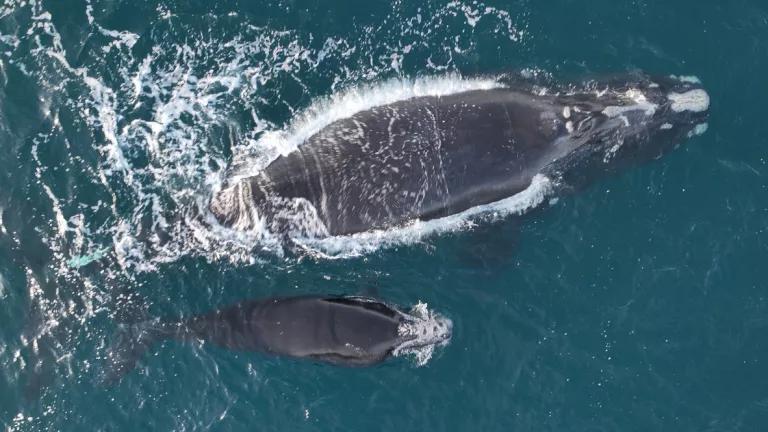Laguna San Ignacio, along the Pacific coast of Baja California, is renowned as the last undisturbed breeding and calving lagoon of the Eastern North Pacific gray whale. Over a decade ago, this World Heritage Site was the focus of a successful international campaign by NRDC and others to prevent construction on its shores of the largest industrial salt works in the world. Today it remains the focus of an international conservation alliance seeking to give the lagoon permanent protection.
Recent scientific research has made these efforts even more critical than previously had been understood..
At the 63rd annual meeting of the Scientific Committee of the International Whaling Commission, held in in Tromsø, Norway this past June, researchers presented results from a photo-identification study establishing that four critically endangered western gray whales from Sakhalin Island, Russia have found their way from the western Pacific Ocean all the way to Laguna San Ignacio.
These results, reported by NOAA scientists David Weller, Amanda Bradford, and colleagues, are both remarkable as a matter of science and significant from the perspective of conservation.
First, though the populations are distinct based on genetic as well as geographic differences, the recent results contradict the longstanding understanding that the tiny population of an estimated 130 individual Western North Pacific gray whales is confined geographically to the eastern seaboard of Asia, isolated from the much larger population of Eastern North Pacific gray whales whose migration route parallels the Pacific Coast of North America each winter and spring. (Range map: Jones and Swartz 1982)

Second, they buttress the importance of Laguna San Ignacio and the efforts to preserve it by establishing it as a critical destination not just for hundreds of individual eastern grays but for still unknown numbers of western grays as well – one of the most endangered whale populations in the world today -- who travel extraordinary distances to get there. Further photo-identification studies are now being undertaken to determine the numbers of western grays whose presence can be established at Laguna San Ignacio.
More generally, this research demonstrates once again how little we understand the ways of the great whales and, therefore, how important is our work to protect them. Laguna San Ignacio is a rare gem of undisturbed gray whale habitat – an invaluable remnant among countless coastal gray whale lagoons that for eons provided protection and sustenance but, in recent times, have been forfeited to human activities, from whaling to development to commercial shipping.
It is a place that must be saved. For the eastern gray whale, for the western gray whale, and for our children.




